|
Getting your Trinity Audio player ready...
|
As the digital marketplace continues to expand, the importance of ranking on the first page of Google has become increasingly evident. With the number of Google searches growing daily, landing a spot on the first page can significantly impact your business. This is because most users tend to click on the first link that appears in the search results, making these top results more likely to gain traction. However, achieving this coveted position is not as daunting as it may seem. There are numerous free and effective ways to optimize your website’s ranking.
These methods include, but are not limited to, adding keywords to specific places on your site, creating quality content, and more. In the following sections, we will delve into these strategies, providing a step-by-step guide on how to use them effectively to bolster your online presence. (Source)
As we navigate this journey, remember that the ultimate goal is to make your website more relevant and accessible to your target audience. So, without further ado, let’s dive in and discover how to get your business on the first page of Google!
Keyword Research
Keyword research, a cornerstone of search engine optimization (SEO), involves identifying and analyzing terms that your potential website visitors might use in search engines. This enables you to target the most effective keywords in your content strategy. (source)
To conduct effective keyword research, start by using a keyword research tool to discover thousands of keyword ideas and essential metrics. Use a seed keyword from your niche to find more keyword ideas. For example, if you’re in the dog food industry, you might use “dog food” as your seed keyword.
Targeting Long-Tail Keywords
While head terms like “dog food” are limited, there are usually hundreds of long-tail phrases you can target. Long-tail keywords are more specific and often have a lower search volume. However, they convert well as users are actively looking for something very specific. By targeting more and more long-tail keywords, your search volume adds up, leading to considerable targeted traffic.
The iPhone 13 is a popular search term, while “Best affordable iPhone 13 cases” has fewer searches but a higher conversion rate.(source)
On-Page Optimization
On-page optimization, also known as on-site SEO, signifies the practice of optimizing different parts of your website that affect its visibility in search engines. It’s what you do on your website to attract search engines and visitors alike. It plays a significant role in enhancing your website’s search engine ranking and improving its organic traffic. (source)
There are various elements of on-page optimization, which includes:
- Title tags: These are HTML elements that specify the title of a webpage. They are displayed on search engine results pages as the clickable headline for a given result. To optimize, ensure your title tags are unique for each page and are within 50-60 characters.
- Meta descriptions: These are brief descriptions of a webpage’s content. They don’t directly influence Google rankings but can affect the click-through rate. To optimize, keep your meta descriptions concise, compelling, and relevant to the content.
- Heading tags: These are used to differentiate the heading of a page from the rest of the content. They play a crucial role in SEO as they help search engines understand the structure of your page. To optimize, use your target keyword in at least one subheading and wrap it in an H2 tag.
By effectively optimizing these elements, you can significantly improve your website’s search engine ranking and visibility.
Content Creation
One of the primary pillars of a robust SEO strategy is high-quality content. It acts as a magnet, pulling in search engines and readers alike. According to Vezadigital, search engines perceive quality content as a sign of a website’s relevance and authority, while for users, it is what makes a website engaging and valuable.
But how to create such content? Here are some tips:
- Relevance is key: Your content should be pertinent to your business and useful to your audience.
- Engage your readers: Your content should be captivating enough to keep the readers on your page, which can positively impact your search rankings as per Social Media Today.
- Optimize for SEO: This includes using relevant keywords, creating an easy-to-navigate website structure, and writing effective meta tags.
Remember, a well-executed content strategy can significantly improve your SEO results and attract more organic traffic to your website.
Link Building
Link building, a crucial component in SEO, refers to the process of acquiring hyperlinks from other websites to your own. This practice is significant because it helps in boosting your website’s visibility on search engines like Google. (source)
Link Building Strategies
There are various strategies that can be employed to build links effectively. Here are some of them:
- Guest Blogging: This involves writing content for other websites or blogs, which in return give you a backlink.
- Directory Submissions: Submitting your website to online directories can also earn you backlinks.
- Social Bookmarking: Sharing your website on social bookmarking sites can get you more visibility and backlinks.
However, it’s important to remember that not all links are created equal. The quality and relevance of the backlinks you get are crucial.
Building High-Quality and Relevant Backlinks
Here are some tips on how to build high-quality and relevant backlinks:
- Offer valuable content that other sites would want to link to.
- Reach out to relevant websites and blogs for guest posting opportunities.
- Participate in relevant forums and online communities, and share your expertise.
Remember, link building is not just about quantity. It’s about quality and relevance.
Social Media
Undeniably, social media has a significant impact on SEO by indirectly influencing factors that affect search rankings. According to SEMrush, social media success can enhance your SEO as Google looks for the right metrics, not just vanity metrics.
Significance of Various Social Media Platforms
Platforms like Facebook and Twitter play a crucial role in SEO. Facebook reviews, for instance, even appear in Google knowledge boxes, thus driving more web traffic to your site. Twitter, on the other hand, boosts your content visibility with relevant hashtags, increasing your brand recognition and traffic.
Optimizing Social Media Profiles
To optimize your social media profiles for better search engine ranking, Search Engine Land suggests:
- Choosing logical handles and profile names that are accurate, relevant, and easy to remember.
- Completing your profile information to ensure visibility in platform-internal searches.
- Incorporating relevant keywords based on how users might try to find the profile.
Moreover, creating share-worthy content with compelling headlines, appealing visuals, and useful information can encourage users to share your posts, enhancing your online visibility.
Local SEO
Local SEO is a crucial strategy for small businesses to connect with nearby consumers. With 76% of consumers planning to shop more locally, it presents a golden opportunity for businesses to increase sales and visibility. Local SEO ensures your business appears in front of local consumers exactly when they need your products or services. This not only helps in attracting relevant traffic but also in saving time and resources by eliminating unqualified leads.
Despite the dominance of big players like Walmart and Amazon in the organic listings, local SEO still allows you to compete effectively. Research shows that 81% of consumers turn to Google to evaluate local businesses, making it a valuable tool for small businesses.
Optimizing for Local Search
- Ensure your business listing is complete and accurate on Google My Business and local directories.
- Use relevant local keywords in your website content and meta tags.
- Encourage customers to leave reviews and ratings on your Google My Business profile.
- Optimize your website for mobile, as most local searches are done on mobile devices.
By leveraging local SEO, you can increase visibility on Google Maps, leading to more calls and visits from local customers. It also helps in establishing your business as a thought leader in your field.
Mobile Optimization
As the world increasingly turns to mobile devices for internet browsing, the importance of mobile optimization for SEO cannot be overstated. It is no longer just an option but a necessity for your online business’s growth. Studies show that users spend 70% of their Internet time on mobile, and 74% of them are more likely to return to a mobile-friendly website. This trend underscores the significance of having a mobile-friendly website.
How to Optimize for Mobile Devices
Here are some practical tips to ensure your website is optimized for mobile:
- Page Speed: Mobile users value speed. Minify code, leverage browser caching, and reduce redirects to enhance your page’s load time.
- Responsive Design: Ensure your website adapts to any device a user uses. A responsive design provides the best mobile experience for your audience.
- User Experience: Make sure your site is easy to navigate. Avoid too big or small buttons that might lead to accidental clicks.
- Titles and Meta Descriptions: Be concise with your titles, URLs, and meta descriptions considering the limited screen space on mobile devices.
- Local Search: If your business has a local element, optimize your mobile content for local search. This includes standardizing your name, address, and phone number.
By implementing these strategies, you can provide a better mobile experience, improve your audience’s perception of your business, and ultimately boost your SEO ranking.
User Experience
User Experience plays a pivotal role in SEO and directly influences how your site ranks on Google. It’s all about creating a user-friendly and fast-loading website to ensure a seamless browsing experience for your users.
- User-friendly Website: Make your website easy to navigate. The quicker users can find what they’re looking for, the better your chances of ranking higher on Google.
- Fast-loading Website: Page loading speed is a critical SEO factor. A slow website can be frustrating for users, leading to a higher bounce rate and negatively affecting your search engine ranking.
Implementing these strategies will not only improve the user experience but also boost your chances of appearing on the first page of Google’s search results. Remember, a satisfied user is more likely to return, bringing you more traffic and helping to improve your site’s visibility.
Analytics and Tracking
Understanding the performance of your website is a crucial aspect of online marketing. This is where website analytics come into play. Google Analytics is a free service that helps you track and analyze traffic to your website. It provides information about visitor behavior, page visits, and more.
But why is tracking website performance metrics so important? It’s not just about the financial or time investment in building and maintaining a website. It’s about understanding how users behave on your website, identifying areas that need improvement, and monitoring progress. As Neil Patel puts it, “the metrics that you track should speak directly toward your goals.”
With Google Analytics, you can monitor a variety of metrics. Some of the key ones include:
- Website Speed: This goes beyond just load time. It includes aspects like ‘Time to Title’, which measures the time it takes for the page title to appear.
- Goal Tracking: This allows you to track specific goals, such as sales or newsletter signups.
- Campaign Tracking: This helps you monitor the performance of your email marketing and other ads.
Remember, it’s not about tracking every available metric, but rather identifying which metrics matter most to your business and align with your goals. So, start tracking and let the data guide your website optimization efforts.
Conclusion
In wrapping up our discussion on how to improve your website’s Google ranking, we’ve highlighted ten key strategies. We highlighted the importance of technical SEO audits and optimizing your pages for Google when setting up a solid website structure. We highlighted the need for high-quality, authoritative content, and the judicious use of relevant keywords.
Remember to keep your titles short and to the point, and don’t shy away from in-depth, long-form content that provides value to your readers. On-page SEO is your bread and butter here, with careful keyword placement and strategic internal linking playing crucial roles. Keep your URLs clean and user-friendly, and make sure your content is not only keyword-rich but also readable and engaging.
Each of these strategies is a stepping stone towards better search engine visibility, and the benefits of investing in SEO are far-reaching and long-term. As John Mueller reiterated, the best way to get ranked is to create high-quality content that searchers will find useful. So, make your site “fantastic” and watch your rankings soar!
Krotov Studio offers cutting-edge SEO services aligned with 2024’s trends for U.S. business owners aiming to elevate their online presence.

Looking to elevate your business’s online presence?
We blend the latest 2024 SEO trends with a personal touch.
Let’s start with a free 15-minute consultation.
It’s a great way to explore how our team can help your business thrive in the digital world.

